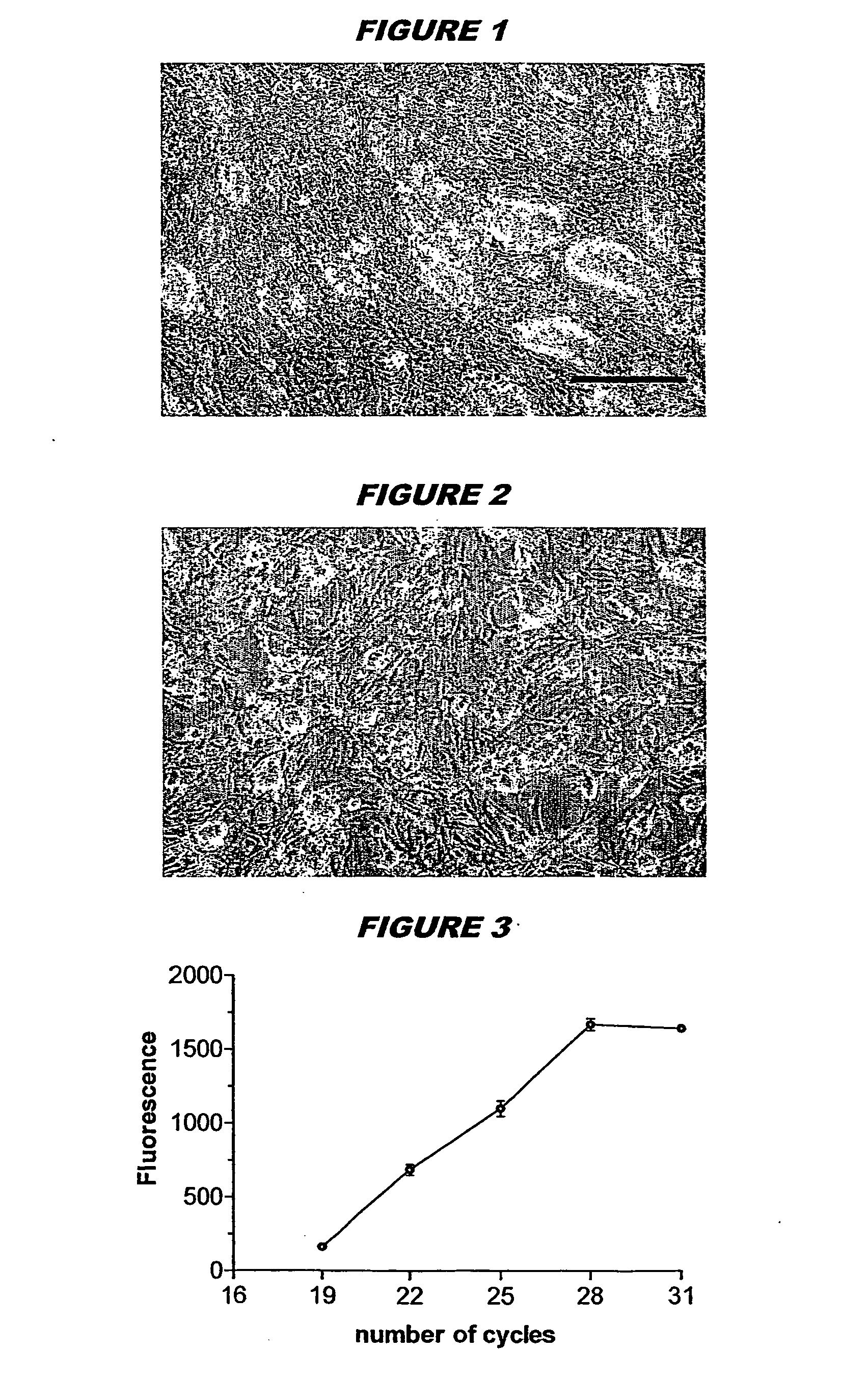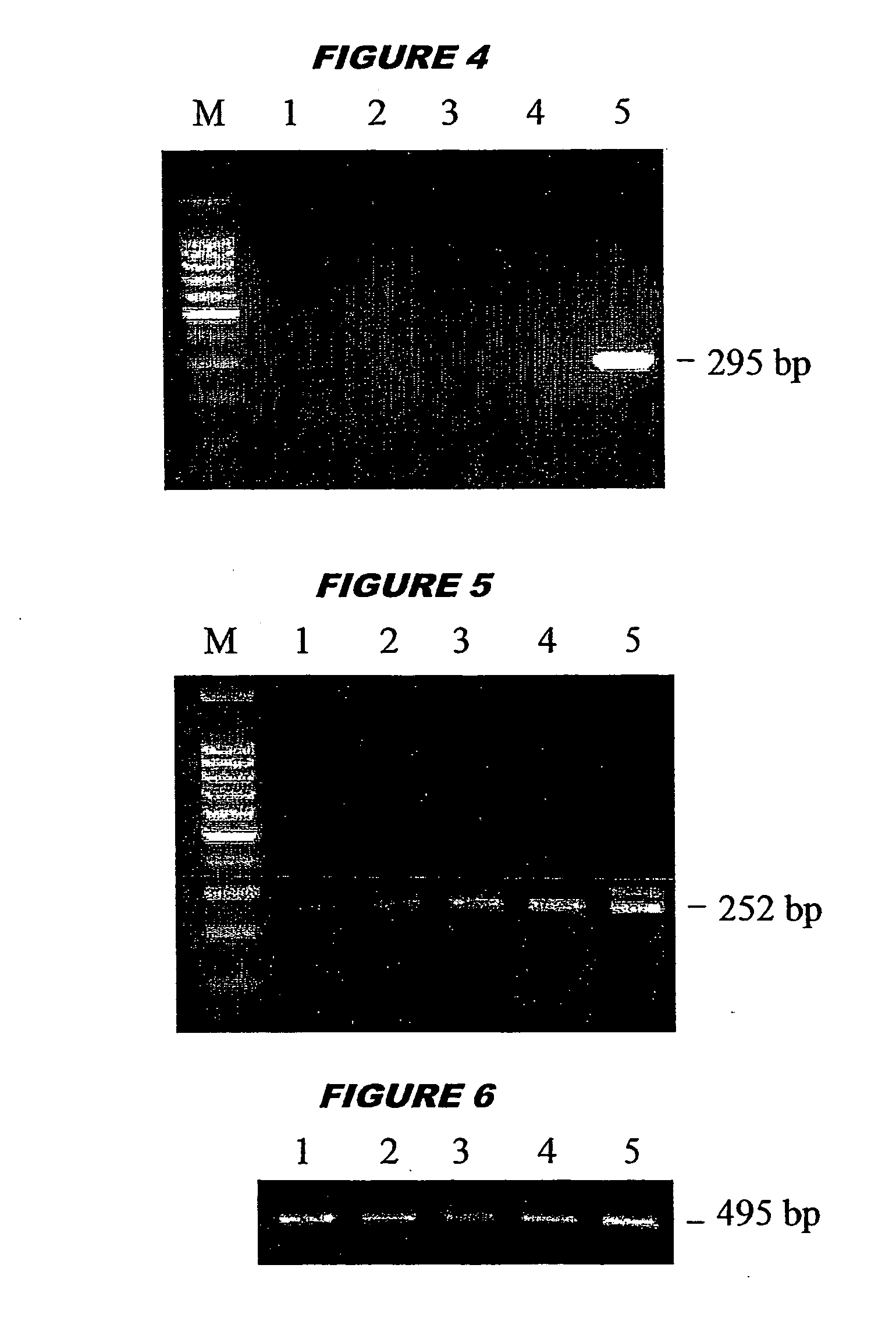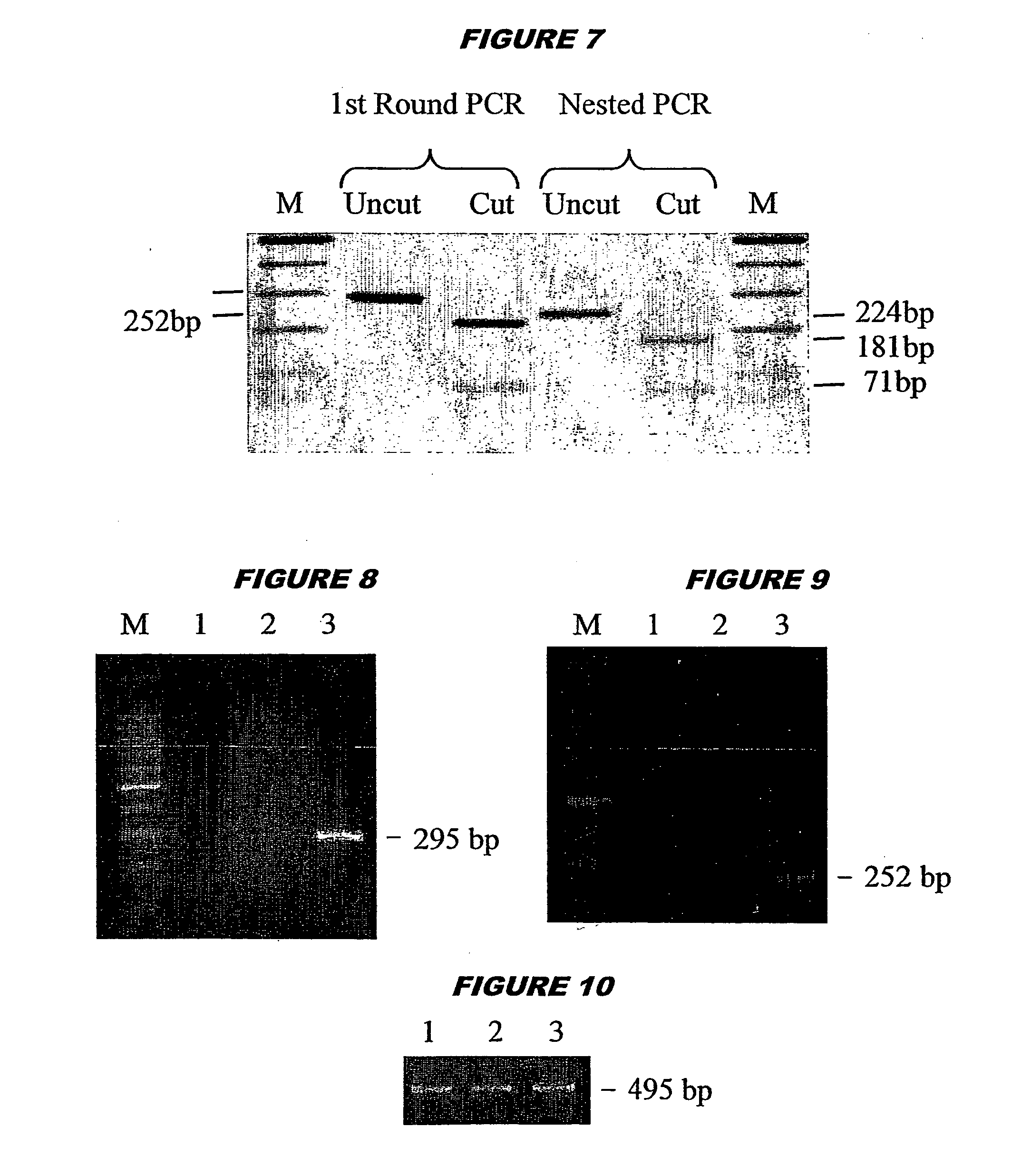Preparation of type II pneumocytes from stem cells
a technology of pneumocytes and stem cells, applied in the field of lung biology, can solve the problems of short supply of human cells, and achieve the effect of convenient and abundant supply of materials
- Summary
- Abstract
- Description
- Claims
- Application Information
AI Technical Summary
Benefits of technology
Problems solved by technology
Method used
Image
Examples
Embodiment Construction
Culture and Differentiation of ES Cells
[0095] Murine E14Tg2a ES cells [51; Dr A. Smith, University of Edinburgh, Scotland] were grown in an undifferentiated state on gelatin-coated tissue culture plates in the presence of 1000 U / ml LIF. Cells were maintained in ‘ES cell medium’ [Glasgow Minimum Essential Medium (G-MEM; available as catalogue number 11710 or 22100 from Invitrogen Life Technologies) supplemented with 10% fetal calf serum (FCS), 2 mM L-glutamine, 0.1 mM 2-mercaptoethanol, and antibiotics (penicillin 100 U / ml; streptomycin 100 μg / ml); no tryptose broth].
[0096] To promote AE2 cell formation, ES cells were first induced to differentiate spontaneously in ES cell medium via EB formation. For this, confluent cultures of undifferentiated ES cells were subjected to limited trypsin digestion (0.05% trypsin; 0.53 mM EDTA in 0.1 M PBS without calcium or magnesium; 2% chicken serum) to produce clusters of 8-15 cells, which were cultured in non-adherent bacterial grade Petri dis...
PUM
| Property | Measurement | Unit |
|---|---|---|
| time | aaaaa | aaaaa |
| time | aaaaa | aaaaa |
| osmolality | aaaaa | aaaaa |
Abstract
Description
Claims
Application Information
 Login to View More
Login to View More - R&D
- Intellectual Property
- Life Sciences
- Materials
- Tech Scout
- Unparalleled Data Quality
- Higher Quality Content
- 60% Fewer Hallucinations
Browse by: Latest US Patents, China's latest patents, Technical Efficacy Thesaurus, Application Domain, Technology Topic, Popular Technical Reports.
© 2025 PatSnap. All rights reserved.Legal|Privacy policy|Modern Slavery Act Transparency Statement|Sitemap|About US| Contact US: help@patsnap.com



